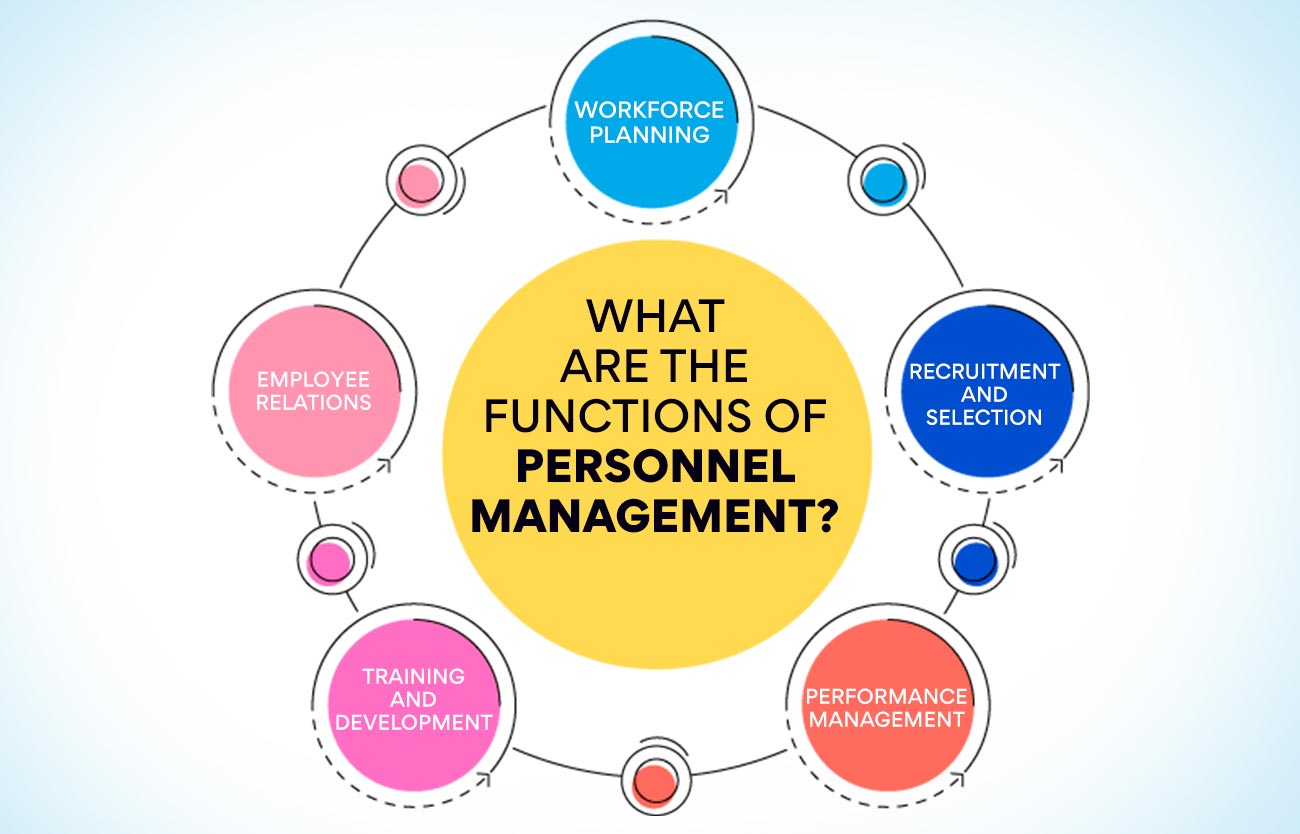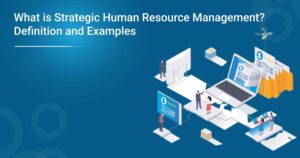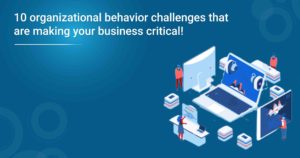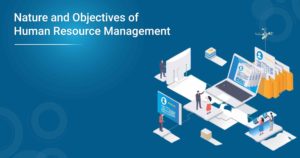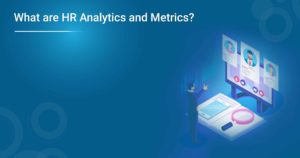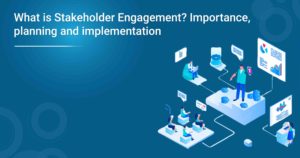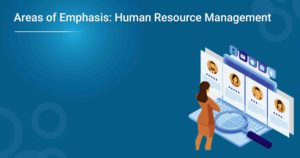There is a lot of confusion between personnel management and human resource management. Sometimes both terms are interchangeable, while other times, they are looked at as two completely different concepts. If you also face this common confusion, this blog post is for you, where we explore the difference between personal management and human resource management and help you to understand which approach is ideal for a business.
What Is Personnel Management?
Personnel management is hiring and developing employees’ skills, experience and commitment to make their contribution more valuable to the organisation. It includes activities such as job design, performance appraisal, training, etc.
It is important to note that personnel management is a relatively old concept that predates the human resources management (HRM) approach. In personnel management, employees are seen as a resource that can be used to achieve organisational goals. It is in contrast to HRM, which views employees as individuals with their own needs and aspirations.
The Society for Human Resource Management defines personnel management as the process of shaping the skills, experience and value they bring to a company to achieve its goals.
What Are the Functions of Personnel Management?
Personnel management is a process of managing people in organisations to optimally utilise them for accomplishing organisational goals. It helps to ensure that the right people are hired for the right jobs and are given the necessary training to complete their tasks effectively. Personnel management also involves developing policies and procedures related to employee benefits, salaries, and job descriptions.
Here are some of the functions involved in personnel management:
- Workforce Planning: This involves forecasting future staffing needs and determining the best way to meet those needs. It looks after both the quantitative and qualitative aspects of workforce planning.
- Recruitment and Selection: Finding and hiring the best candidates for vacant positions to come under recruitment and selection. The selection process includes screening applications, conducting interviews, and administering tests.
- Performance Management: It involves setting goals and objectives for employees, assessing their performance, providing feedback, and taking corrective action when necessary.
- Training and Development: It is all about providing employees with the skills and knowledge they need to do their jobs effectively. It includes both formal and informal training methods. Employees learn about the organisation’s culture, values, and goals during training and development.
- Employee Relations: This involves maintaining good relationships between employees and management via dealing with issues such as conflict resolution, grievance procedures, and disciplinary action.
Also Read: Evolution Of Human Resource Management: Past and Future
Roles And Responsibilities of a Personnel Manager
A personnel manager is responsible for recruiting and selecting employees and their training and development. They also oversee employee benefits and relations and monitor compliance with employment law.
Here are the common responsibilities looked over by a personnel manager:
- Develop Employee Training Programs: A personnel manager will develop programs to improve employee productivity and skills. They work closely with department managers to identify training needs and create and implement programs that address them.
- Select New Employees: When a company has an open position, it is the responsibility of the personnel manager to conduct interviews and choose the most qualified candidate for the job.
- Monitor Employee Performance: Part of a personnel manager’s job is to ensure that employees meet their expectations. They may do this through regular check-ins, annual performance reviews, or other methods.
- Assistance To Top Management: A personnel manager is often responsible for providing information and analysis to top management on various topics, such as employee morale, retention rates, and training effectiveness. They may also be asked to develop plans to improve these areas.
- Act As a Mediator: When conflict arises between employees, the personnel manager often steps in to mediate. They will listen to both sides of the story and help resolve a fair resolution for all parties involved.
While there is an ocean to learn about personnel and human resource management, there is a scarcity of insightful courses that will fuel your experience. Worry not; we have developed a PG certificate course to make things as lucid as possible.
Take your HR career to higher levels with Post Graduate Certificate in Human Resource Management. Check out the course now.
What is Human Resource Management?
It is the process of people management in organisations. It includes recruiting, selecting, training, assigning, and promoting employees. HRM also deals with employee benefits, performance management, and job satisfaction. It is important to note that human resource management differs from personnel management in a lot of senses.
The global HRM market is anticipated to grow to $686 billion by 2025. This statistic is a clear indication that human resource management is an essential function in organisations that cannot be avoided.
There are several reasons why human resource management is every organisation’s need. For instance, it helps organisations to recruit and retain the best talent. Additionally, human resource management helps to improve employee productivity and motivation.
In conclusion, human resource management is a vital function in any organisation. It helps to ensure that the organisation has the best talent and that employees are productive and motivated. If you are looking to learn more about human resource management, consider taking a course on the subject. For instance, our Post Graduate Certificate in Human Resource Management is a great place to start, where you get the comfort and convenience of learning through practice.
Check out our course now before we fill in seats for our November batch.
What Are The Functions Involved In Human Resource Management?
According to the Society for Human Resource Management, human resource management is responsible for a variety of functions in organisations. These functions include:
- Recruiting and Hiring Employees: It includes posting job openings, reviewing applications, interviewing candidates and extending job offers. In some organisations, human resource management may also be responsible for pre-employment screening, such as background checks and drug testing.
- Onboarding: It is the process of orienting new employees to the organisation and getting them acclimated to their new roles. Onboarding may include activities such as providing new employees with an overview of the organisation’s history, mission and values, introducing them to their co-workers, and helping them understand the organisation’s culture so that they can best utilise their skills.
- Establishing Positive Working Culture: A positive working culture is essential to employee satisfaction and retention. Human resource management plays a role in establishing a positive working culture by developing policies and procedures that support employees’ well-being, such as policies around flexible work arrangements and paid time off. Additionally, human resource management may be responsible for organising employee events and activities, such as company picnics and holiday parties.
- Performing Disciplinary Actions: Unfortunately, there are times when employees need to be disciplined for violating company policies or engaging in misconduct. Human resource management is responsible for handling disciplinary actions, including issuing warnings, suspending employees or terminating their employment.
- Arranging Rewards And Recognition: Rewarding employees for their hard work and accomplishments is a great way to boost morale and keep employees engaged. Human resource management may be responsible for arranging employee rewards and recognition programs, such as employee of the month awards and spot bonuses.
- Maintaining Employee Records: Human resource management is responsible for maintaining employee records, such as employment contracts, performance reviews and time off requests. Additionally, human resource management may be responsible for tracking employee compliance with mandatory training, such as sexual harassment training and first aid certification.
Also Read: Key Fundamentals of Human Resource Management
Roles and Responsibilities of a Human Resource Manager
The human resource manager has a broad range of duties and roles that encompass the job’s personnel and management aspects. The primary responsibilities of an HR manager are to recruit, screen, and hire employees, train new and existing employees, and more.
In addition to these personnel-related duties, the human resource manager is also responsible for developing and implementing company-wide policies and procedures related to employee behaviour, performance, and attendance.
The human resource manager is also engaged in developing strategies to improve employee morale and motivation and to increase productivity and retention. The HR manager is a fundamental management team member and plays a key role in the organisation’s overall success.
Significant Differences Between Personnel Management and Human Resource Management
The difference between personnel management and human resource management is that personnel management is a traditional approach to managing employees in an organisation, while human resource management is a more modern approach.

Let’s discuss the difference between personnel management and human resource management against some vital parameters:
Scope: Personnel management is limited to managing the employees of an organisation. On the other hand, HRM includes all aspects related to managing an organisation’s human resources. It is important to note that personnel management and human resource management are interrelated.
Objective: Personnel management aims to ensure that the organisation has the right number of people with adequate skills and knowledge to do the job. The objective of human resource management is to ensure that the organisation has a pool of competent and skilled employees to meet the future needs of the organisation.
Function: Personnel management is responsible for performing employee benefits activities such as training and development of employees. On the other hand, HRM is responsible for all aspects of employee management, such as recruitment, selection, administration, compensation and benefits, employee relations, and so on.
Nature: Personnel management is reactive. It means that it responds to the issues and problems related to employees after they have arisen. Meanwhile, human resource management is proactive. It means that it takes measures to prevent employee issues and problems from occurring.
Importance: Personnel management is critical To ensure all the employees are aligned with common organisational goals and that their skills and experience meet the company’s demands. Human resource management takes responsibility for overall employees and makes sure their tenure in the company is most fruitful for both employees and the organisation.
Productivity: Personnel management is not concerned with the productivity of employees. In contrast, human resource management is concerned with employees’ productivity. An HR manager will always try to find ways to increase employees’ productivity, whereas a personnel manager will not be involved in it.
Decision Making: Personnel management is not involved in an organisation’s decision-making process as their job ends with developing and fine-tuning the right skills. On the contrary, human resource management is involved in an organisation’s decision-making process at the administration level.
Planning: Personnel management does not plan for future activities. Whereas human resource management always keeps a contingency plan and a future strategy for the organisation to help meet its future goals and dodge any discrepancies.
Time frame: When it comes to personnel management, the time frame is short-term. Personnel management aims to meet the organisation’s immediate needs, and human resource management is a long-term and ongoing process.
The Bottom Line
In conclusion, the difference between personnel management and human resource management is that personnel management focuses on employee development tasks. In contrast, human resource management focuses on the strategic management of employees. Human resource management is a more modern approach to managing employees, and it is becoming increasingly popular in organisations as they seek to gain a competitive advantage.
Personnel management is more concerned with the day-to-day running of the employee administration, while human resource management is more focused on the long-term strategic management of employees. Human resource management is a more holistic approach that considers the whole person, not just their job role.
So, if you’re looking for a more strategic approach to managing your employees, human resource management is the way to go. However, if you’re more interested in the administrative side, personnel management may be better for you. Whichever route you select, just ensure you’re clear on the difference between the two! Now that you are aware of the difference between personnel management and human resource management, would you like to garner experience in both verticals? If yes, we have an insightful and engaging course on human resource management! Check out now and get started on your journey to becoming a human resource management expert!
More Information:
What Is Human Resource Management System?
What is an HR Business Partner: The Ultimate Guide







